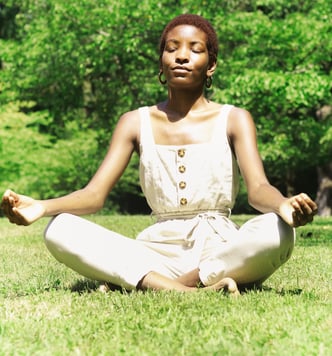Fabulous Breathing Exercises - Tools to Unwind and Refresh this Summer
by Gerry Waters, on May 31, 2021 11:38:39 AM

Breath is our own personal super-power - something we can call on whenever we are anxious, stressed, or can't sleep. Easy to control and completely free, it something that we tend to forget about, but it's always there to help us. As we move into the summer and have the chance to unwind and relax, don't forget that you can always use breath to calm, recenter and refresh. We talk about breath in our film Angst, and focus on breathing tips and techniques in our Creative Coping Toolkit SEL program. Here are a few other ideas for great breathing exercises
Belly Breathing
According to The American Institute of Stress, 20 to 30 minutes of belly breathing each day will reduce anxiety and stress.5 Find a comfortable, quiet place to sit or lie down. For example, try sitting in a chair, sitting cross-legged, or lying on your back with a small pillow under your head and under your knees.
- Place one hand on your upper chest and the other hand on your belly, below the ribcage.
- Allow your belly to relax, without forcing it inward by squeezing or clenching your muscles.
- Breathe in slowly through your nose. The air should move into your nose and downward so that you feel your stomach rise with your other hand and fall inward (toward your spine).
- Exhale slowly through slightly pursed lips. Take note of the hand on your chest, which should remain relatively still.

Box Breathing
Also known as four-square breathing, box breathing is very simple to learn and practice. In fact, if you've ever noticed yourself inhaling and exhaling to the rhythm of a song, you're already familiar with this type of paced breathing. It goes like this:
- Exhale to a count of four.
- Hold your lungs empty for a four count.
- Inhale to a count of four.
- Hold air in your lungs for a count of four.
- Exhale and begin the pattern anew.
4-7-8 Breathing
The 4-7-8 breathing exercise, also called the relaxing breath, acts as a natural tranquilizer for the nervous system. At first, it's best to perform the exercise seated with your back straight. Once you become more familiar with the breathing exercise, however, you can perform it while lying in bed:
- Place and keep the tip of your tongue against the ridge of tissue behind your upper front teeth for the duration of the exercise.
- Completely exhale through your mouth, making a whoosh sound.
- Close your mouth and inhale quietly through your nose to a mental count of four.
- Hold your breath for a count of seven.
- Exhale completely through your mouth, making a whoosh sound to a count of eight

Lion's Breath
Lion’s breath, or simhasana in Sanskrit, during which you stick out your tongue and roar like a lion, is another helpful deep breathing practice. It can help relax the muscles in your face and jaw, alleviate stress, and improve cardiovascular functions. This exercise is best performed in a comfortable seated position, leaning forward slightly with your hands on your knees or the floor. Spread your fingers as wide as possible and inhale through your nose. Open your mouth wide, stick out your tongue and stretch it down towards your chin. Exhale forcefully, carrying the breath across the root of your tongue. Whilst exhaling, make a "ha" sound that comes from deep within your abdomen. Breathe normally for a few moments, then repeat.
Mindful Breathing
Mindfulness meditation involves focusing on your breathing and bringing your attention to the present without allowing your mind to drift off to the past or future.
- Choose a calming focus, including a sound ("om"), positive word ("peace"), or phrase ("breathe in calm, breath out tension") to repeat silently as you inhale or exhale.
- Let go and relax. When you notice your mind has drifted, take a deep breath and gently return your attention to the present.
Resonance Breathing
Resonance breathing, or coherent breathing, can help you get into a relaxed state and reduce anxiety.
- Lie down and close your eyes.
- Gently breathe in through your nose, mouth closed, for a count of six seconds. Don't fill your lungs too full of air.
- Exhale for six seconds, allowing your breath to leave your body slowly and gently without forcing it.
- Continue for up to 10 minutes.
- Take a few additional minutes to be still and focus on how your body feels.
Simple Breathing Exercise
You can perform this exercise as often as needed. It can be done standing up, sitting down, or lying down. If you find this exercise difficult or believe it's making you anxious or panicky, stop for now. Try it again in a day or so and build up the time gradually.
- Inhale slowly and deeply through your nose. Keep your shoulders relaxed. Your abdomen should expand, and your chest should rise very little.
- Exhale slowly through your mouth. As you blow air out, purse your lips slightly, but keep your jaw relaxed. You may hear a soft “whooshing” sound as you exhale.
- Repeat this breathing exercise. Do it for several minutes until you start to feel better.10









